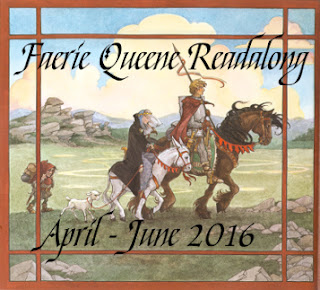Ozathon #1: The Wonderful Wizard of Oz
 The Wonderful Wizard of Oz, by L. Frank Baum
The Wonderful Wizard of Oz, by L. Frank Baum
It's such a long time since I read this story, but I remember all the illustrations so well! I must have read it many times as a kid.
I think we all know the story, so I won't repeat it, except to point out that there is about three times as much material in the book as there is in the movie. I'm not a huge fan of the movie -- I didn't grow up on it like so many people did -- so I won't say a lot about it either. But Baum puts in a whole lot of hazards and side-trips that couldn't fit in the film version!
L. Frank Baum was wanting to write an imaginative, fairy-tale type of story for the new America. Forget all those princes and princesses, and especially all the violence, death, and heavy-duty moralizing of 19th-century children's literature! This was going to be a fun, quirky story for a vigorous, expanding America, and it was going to star some familiar sights for an American child, like scarecrows, farmers, and working people. The morals would be there, of course, but they'd be subtle, and they'd be American.
So Dorothy's sidekicks long for brains, heart, and courage, but they obviously already have them; they just don't realize it. The Scarecrow is forever thinking out solutions to their difficulties. The Tin Woodman weeps when he accidentally squishes a bug, or when saying goodbye to his friends; he's got all the heart he needs. And when the terrifying Kalidahs attack, the Cowardly Lion tells everyone to get behind him and he'll defend them for as long as he can. The Wizard hasn't got any problem with giving them the things they want, because they already have them. But as he says, everyone in Oz must earn their rewards. Actually, he's the only one who says that; everyone else just helps each other! So we have Baum pushing the virtues of modesty and hard work. Throughout, of course, the team is helping each other and anyone else they come across, which -- like any fairy tale -- pays off in reciprocated help.
The scene I particularly remember is the poppy field. Dorothy and the Lion are susceptible to the soporific, poisonous vapors of the massed poppies, and they'll sleep forever and die if they don't get out. The Scarecrow and the Tin Woodman are able to carry Dorothy, but they can't carry the Lion, who tries to run but succumbs to the vapors not too far from the edge. Luckily, the Tin Woodman helps the Mouse Queen, who then gets her mice to help the Lion. It all comes down to cooperation and creative solutions -- provided by the Scarecrow, of course.
I also remember the china village, which is a minor scene, and the Hammerheads, who are really strange. They look like Tweedledee and Tweedledum, but have no arms, and use their heads as battering rams. This is, I suppose, why I remember the Quadling country as particularly weird, despite the country of the Winkies being arguably just as strange.
It was really fun to read this as an adult and come to a new appreciation of what Baum was trying to do. The illustrations are just delightful, and of course they're color-coded to the country they take place in.






I'm so glad you had fun with this! I just read an introduction by Jack Zipes to a Penguin edition and he also emphasized the way the friends helped each other, in contrast to the Wizard who seems to represent the American "con man" spirit. Interestingly, he insists that Oz is NOT America, but a utopian otherworld created at least partly in protest of American injustice. Food for thought when I get around to writing my own post.
ReplyDeleteHuh, I'm not sure how I feel about that. Is it a utopian world when a little girl has to defeat the Wicked Witches who rule half the country, and the ostensible rulers do nothing about, say, keeping the main roads in good order or the Hammerheads in line? Oz is certainly INTERESTING, but I'm not sure it's very utopian. Parts of it are lovely!
DeleteNo, not so much in this one, but they became more utopian as they went on -- however, Baum wasn't a very consistent writer, so coming up with any overarching theory will run into problems.
Delete